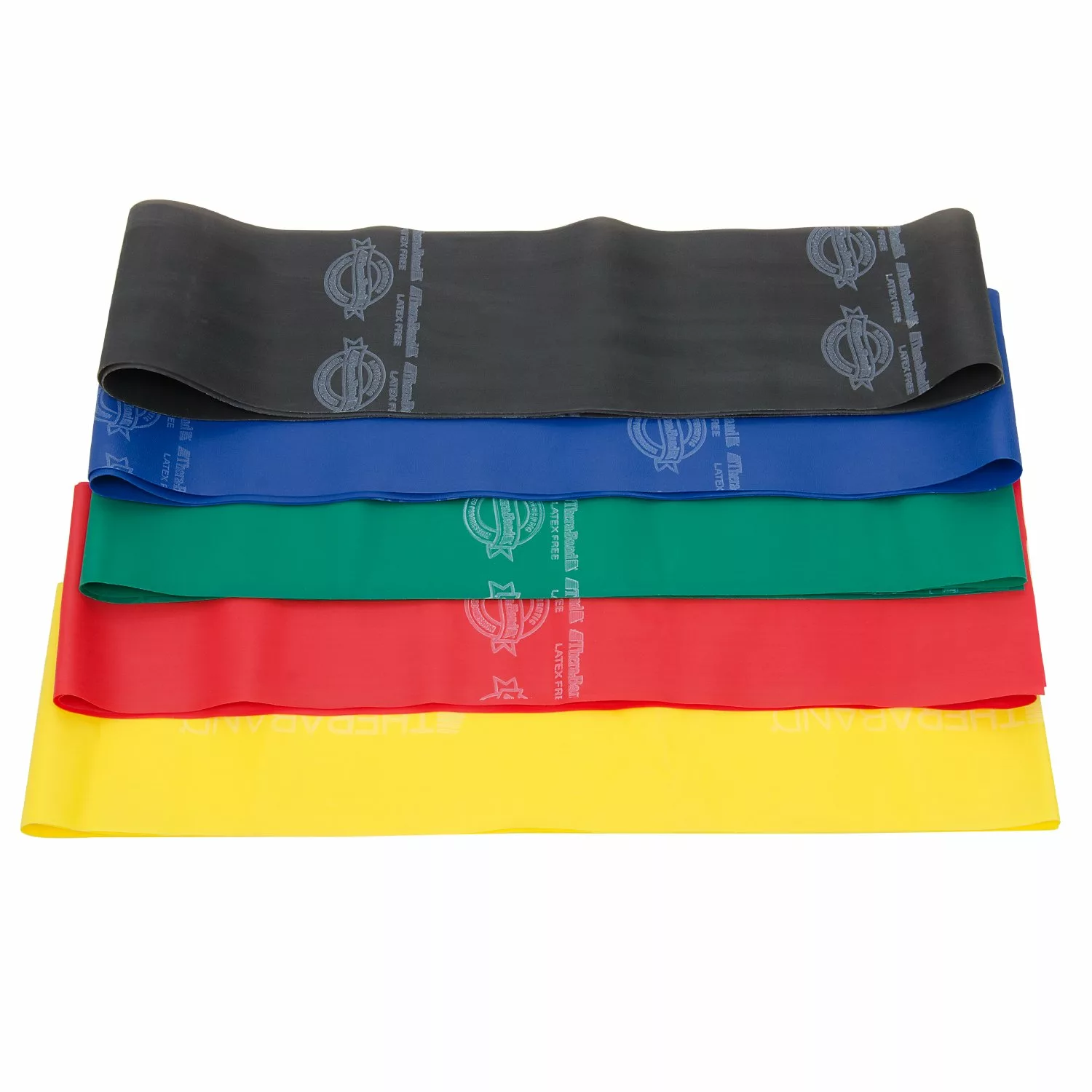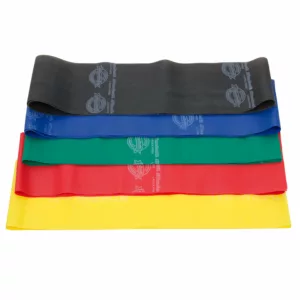
When gyms were shutdown during the pandemic, people who went to the gym still wanted a way to stay in shape and exercise. Some people bought exercise bikes and/or treadmills to work out at home at their own pace. Another way to stay in shape is using resistance bands which are a great way to exercise your muscles. They can be considered an alternative to dumb-bells or lifting weights. Using resistance banks are a cost-effective way to work out instead of using free-weights. You can use them anywhere in your house and can save space. Some downsides of using resistance bands are that you won’t know exactly how much weight you are lifting and there is a limit of the amount of weight you can actually lift.
One brand of resistance bands are the Theraband resistance bands. According to the company’s website, it was founded 40 years ago by two clinicians to help patients recover. There a range of resistance bands, each with a unique color to differentiate between the different resistance/force you can apply to your body.

Some benefits of using these Theraband resistance bands include helping to reduce pain, increase flexibility, and reduce future injuries. You can use these bands as part of your rehabilitation or just to diversify your work-out.
Choosing the Right Theraband Set for Your Needs
There are some factors to consider when selecting a resistance band set. They include resistance levels (beginners start with lighter resistance), material (rubber, latex, or fabric) and size and length (long or short).
Since I wanted to relive the pain in my adductor muscle (upper leg, thigh region), I chose the “yellow” band because it had the lowest resistance and this was my first time using any kind of resistance bands. My main fitness goal was to help my adductor muscle to recover and reduce pain when moving my leg.
There are some safety tips and practices you may need to be aware of when using the Theraband resistance bands. Some fitness trainers recommend to not use the resistance bands everyday and take a break between work out sessions. Start with the easy exercises and then gradually increase the resistance. Make sure to the anchor point for the resistance band (where the other end of the band is tied to) is stable, like a beam or tree outside. Finally, you can do some warm up exercises (like lunges and arm circles) before doing any resistance band exercises.
Incorporating Theraband Workouts into Your Routine
Disclamer: Please talk with your healthcare provider before starting any exercise program.
Here are some exercises I did to help my pain in my thigh muscle. I did this exercise routine in the order listed below. I relied on the information given to be my healthcare provider.
Standing Hip Exercises —
- Forward kick –
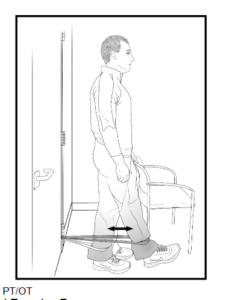
-
- Attach one end of the resistance band to an anchor and the other end to the ankle of the leg you want to stretch or the injured leg.
- Face away from the door or the anchor.
- Move the stretched leg out forward, keeping the knee straight, and the move it back slowly.
- Do 3 sets of 10.
- Backward kick –
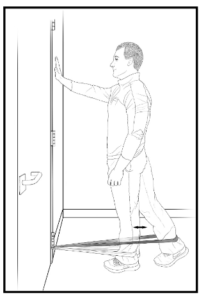
-
- Attach one end of the resistance band to an anchor and the other end to the ankle of the leg you want to stretch or the injured leg.
- Face toward the door or the anchor
- Move the stretched leg back, keeping the knee straight, and move it back slowly to the starting position.
- Do 3 sets of 10
Hip adduction
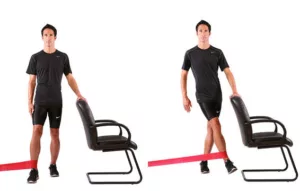
- Attach one end of resistance band to an anchor and tie the other end to your ankle the leg you want to stretch or the injured leg.
- move the injured leg across the uninjured leg, stretching the theraband, and then slowly return to starting position.
- Do 3 sets of 10.
Maintaining and Caring for Your Theraband Resistance Bands
The Theraband set can be cleaned using mild soap and warm water and then pat dry. Do not expose the bands to direct sunlight or to heat. Keep the bands in a cool place. If there is a rip or tear in the bands, consider replacing the bands.
Final Thoughts
I would recommend the Theraband resistance bands as a tool to help anyone recover from an injury. These bands helped me to reduce the pain in my lower lip region when I move around. Your results may vary depending on what the exercise routines you choose.
References:
https://www.theraband.com/about-us
https://blog.torokhtiy.com/guides/what-weight-resistance-band-should-i-use/
https://www.garagegymreviews.com/using-resistance-bands
https://www.med.umich.edu/1libr/PMR/TherabandExerciseProgram.pdf
https://www.theraband.com/care-and-safety
https://www.fittylife.com/how-to-clean-care-resistance-bands/

